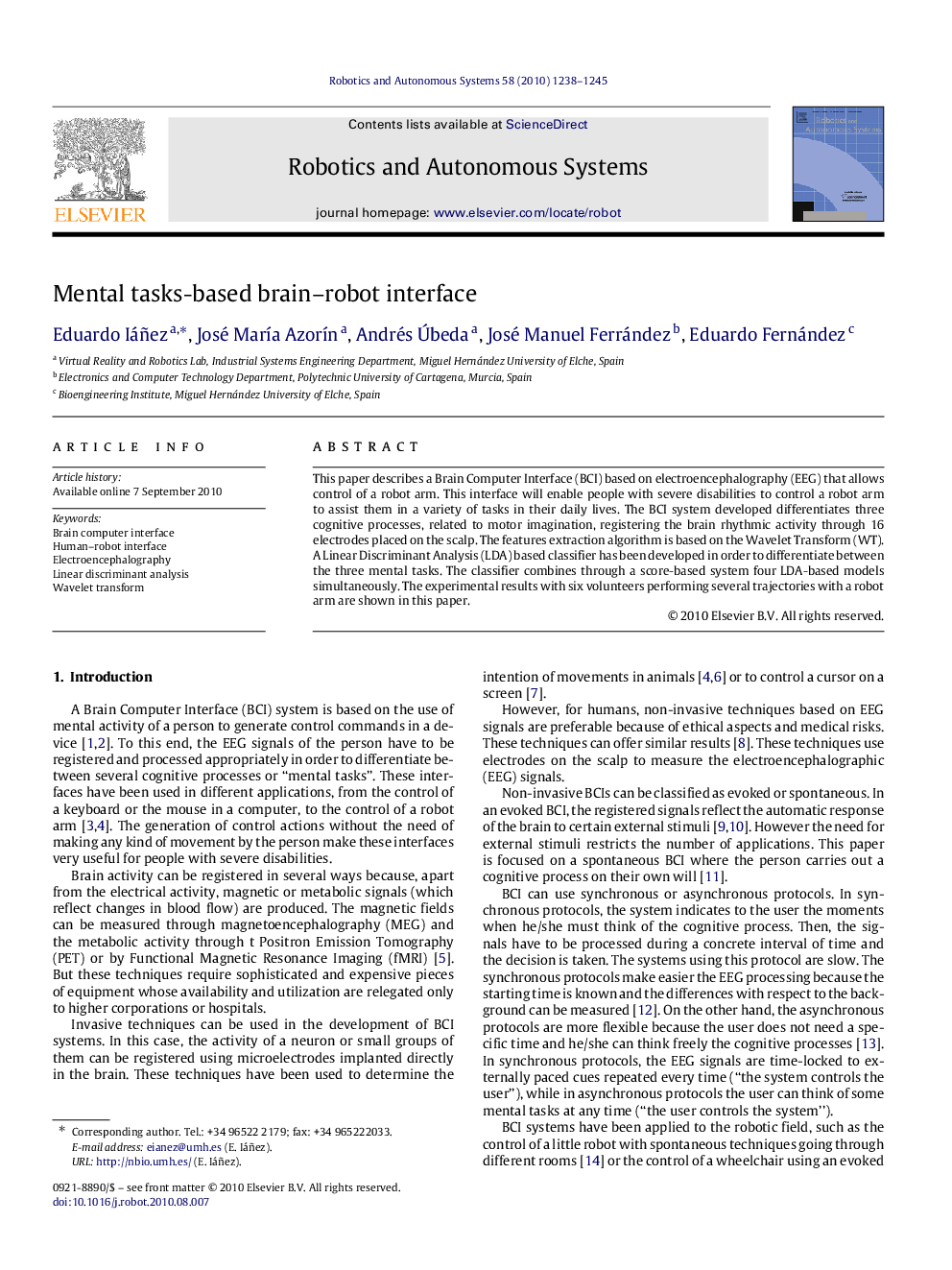| Article ID | Journal | Published Year | Pages | File Type |
|---|---|---|---|---|
| 413285 | Robotics and Autonomous Systems | 2010 | 8 Pages |
This paper describes a Brain Computer Interface (BCI) based on electroencephalography (EEG) that allows control of a robot arm. This interface will enable people with severe disabilities to control a robot arm to assist them in a variety of tasks in their daily lives. The BCI system developed differentiates three cognitive processes, related to motor imagination, registering the brain rhythmic activity through 16 electrodes placed on the scalp. The features extraction algorithm is based on the Wavelet Transform (WT). A Linear Discriminant Analysis (LDA) based classifier has been developed in order to differentiate between the three mental tasks. The classifier combines through a score-based system four LDA-based models simultaneously. The experimental results with six volunteers performing several trajectories with a robot arm are shown in this paper.
Research highlights► A non-invasive spontaneous BCI using an asynchronous protocol has been developed. ► This BCI allows us to differentiate between three cognitive processes. ► The combination of the four models allows improvement of the final decision. ► The results improve when the user makes the trajectories with the robot arm.
